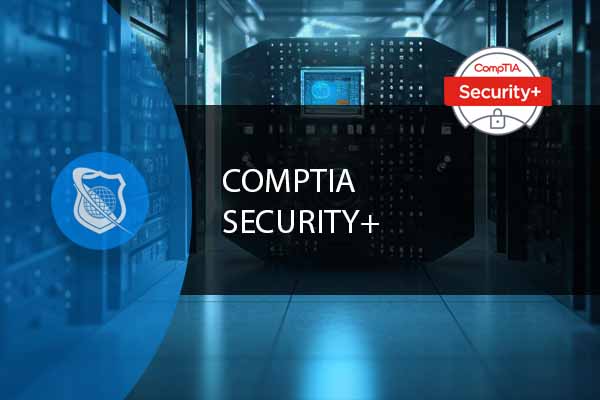Malicious activity indicators, often referred to as Indicators of Compromise (IoCs), are telltale signs that a network or system may have been compromised by a cyber threat. Recognizing these indicators is crucial for early detection and response to potential security incidents. Here are some common IoCs:
- Unexpected Network Traffic: An unusual increase in network traffic, especially to foreign or suspicious IP addresses, can indicate a breach or malicious activity.
- Unusual Account Activity: This includes unexpected logins, especially at odd hours or from unusual locations, and repeated failed login attempts, which might indicate a brute force attack.
- Changes in File Integrity: Unauthorized changes to files and configurations, often detected by file integrity monitoring systems, can signal a compromise.
- Unexplained System Changes: New, unknown software installations, or unexplained changes to system settings and registries can be a sign of malware or unauthorized access.
- Anomalies in User Behavior: Deviations from typical user behavior, as identified by user and entity behavior analytics (UEBA) systems, can be an indicator of a compromised account.
- Security Software Tampering: Disabling or tampering with antivirus or other security tools is a common tactic used by malware to avoid detection.
- Suspicious Registry or System File Changes: Unauthorized modifications to system files or registry keys may indicate the presence of malware or a rootkit.
- Data Exfiltration Signs: Large amounts of data being transferred from the network to an external location can be a sign of data theft.
- Unexpected Patching of Systems: Unauthorized or unexpected patching of systems might indicate an attacker is trying to maintain access or cover their tracks.
- Unusual DNS Requests: Frequent, unusual, or repetitive DNS requests, especially to known malicious domains, can indicate command and control (C&C) communication by malware.
- Slow System Performance: Sudden drops in system performance can be due to resource-intensive malicious activities like crypto mining or DDoS botnet activities.
- Unexplained Database Activities: Unusual database read or write operations, especially in large volumes, might indicate data exfiltration or tampering.
- Error Messages and System Crashes: Frequent system crashes or error messages can be a side-effect of a compromised system struggling with malicious processes.
- Suspicious Email Activities: An increase in phishing emails, strange email forwarding rules, or unusual email sent from a company account can indicate a compromised email system.
These indicators should be monitored continuously as part of an organization’s cybersecurity strategy. Early detection and prompt response to these indicators are key to minimizing the impact of a security breach.
Let’s dive into each of these indicators of malicious activity in more detail, discussing ways to detect them and potential actions for verification and remediation.

Information Security Analyst Career Path
An Information Security Analyst plays a pivotal role in safeguarding an organization’s digital infrastructure and sensitive data. This job involves a blend of technical expertise, vigilance, and continuous learning to protect against ever-evolving cyber threats.
Unexpected Network Traffic
Detection:
- Monitor network traffic using tools like intrusion detection systems (IDS) and network traffic analysis solutions.
- Set up alerts for traffic spikes, especially to known malicious IPs or unusual geographic locations.
Actions:
- Investigate the source and destination of the traffic.
- Use network segmentation and firewalls to isolate suspicious traffic.
- Update firewall rules to block known malicious IPs.
Unusual Account Activity
Detection:
- Implement account monitoring tools to track login locations, times, and frequency.
- Set alerts for failed login attempts and logins from unusual locations or at odd hours.
Actions:
- Verify the activity with the account user.
- If suspicious, reset account passwords and review account permissions.
- Audit recent actions taken by the account.
Changes in File Integrity
Detection:
- Use file integrity monitoring (FIM) tools to detect unauthorized changes to critical files and configurations.
- Set up alerts for any modifications to system files.
Actions:
- Investigate the change history and compare it with authorized updates.
- Restore affected files from trusted backups if necessary.
- Analyze the nature of the changes to understand the impact.
Secure Your Networks and Prevent Password Breaches
Our robust CompTIA Sec+ course is the perfect resouce to ensure your company’s most valuable assets are safe. Up your security skills with this comprehensive course at an exceptional price.
Unexplained System Changes
Detection:
- Employ system monitoring tools to track installations and system setting changes.
- Use antivirus software to detect unauthorized software.
Actions:
- Investigate the source of the changes.
- Remove any unauthorized software and reverse unauthorized changes.
- Update security policies to prevent similar incidents.
Anomalies in User Behavior
Detection:
- Implement UEBA systems to establish baseline behaviors and detect deviations.
- Monitor for unusual data access patterns or resource usage.
Actions:
- Verify unusual activities with the user.
- If necessary, suspend user access and conduct a thorough investigation.
- Update user access controls and educate users about secure practices.
Security Software Tampering
Detection:
- Regularly check the status of security tools.
- Set up alerts for any changes in security software status.
Actions:
- Investigate why the security tool was disabled or altered.
- Reinstate and update security tools.
- Scan the system for malware or breaches.
Suspicious Registry or System File Changes
Detection:
- Use tools to monitor registry and system file states.
- Set alerts for any unauthorized modifications.
Actions:
- Investigate the change logs to identify the source.
- Reverse unauthorized modifications.
- Scan for malware and strengthen system security.
Data Exfiltration Signs
Detection:
- Monitor data flows, especially large transfers or unusual destinations.
- Use Data Loss Prevention (DLP) tools to track sensitive data movement.
Actions:
- Investigate and validate the legitimacy of data transfers.
- If illegitimate, isolate affected systems and networks.
- Analyze data logs to identify the source and scope of the exfiltration.
Unexpected Patching of Systems
Detection:
- Monitor system updates and compare against authorized patch schedules.
- Set alerts for unscheduled patches or updates.
Actions:
- Verify the source of the patch.
- If unauthorized, remove the patch and restore from backups if needed.
- Investigate the intent behind the unauthorized patching.

Lock In Our Lowest Price Ever For Only $14.99 Monthly Access
Your career in information technology last for years. Technology changes rapidly. An ITU Online IT Training subscription offers you flexible and affordable IT training. With our IT training at your fingertips, your career opportunities are never ending as you grow your skills.
Plus, start today and get 10 free days with no obligation.
Unusual DNS Requests
Detection:
- Monitor DNS queries and set up alerts for repetitive or suspicious requests.
- Regularly update lists of known malicious domains.
Actions:
- Investigate the source of unusual DNS requests.
- Block access to malicious domains.
- Scan affected systems for malware.
Slow System Performance
Detection:
- Monitor system performance metrics.
- Use performance monitoring tools to detect anomalies.
Actions:
- Investigate processes consuming excessive resources.
- Scan for malware, especially crypto-mining or botnet activities.
- Optimize system performance and review security measures.
Unexplained Database Activities
Detection:
- Implement database activity monitoring.
- Set alerts for unusual read/write operations or data accesses.
Actions:
- Investigate the transactions and user activities involved.
- If suspicious, revert changes from backups and lock down database access.
- Review and update database security policies.
Network Administrator Career Path
This comprehensive training series is designed to provide both new and experienced network administrators with a robust skillset enabling you to manager current and networks of the future.
Error Messages and System Crashes
Detection:
- Monitor system logs for error messages and crash reports.
- Use system health monitoring tools for real-time alerts.
Actions:
- Investigate the cause of errors and crashes.
- Scan for malware or system corruption.
- Address underlying issues and reinforce system stability measures.
Suspicious Email Activities
Detection:
- Monitor email systems for unusual patterns like auto-forwarding rules.
- Use email security tools to detect phishing attempts and anomalies.
Actions:
- Investigate and confirm the legitimacy of unusual email activities.
- Reset passwords and review email rules if necessary.
- Train users in recognizing and reporting phishing attempts.
By actively monitoring these indicators and having a response plan in place, organizations can significantly reduce the risk and impact of cyber threats.
Key Term Knowledge Base: Key Terms Related to Common Malicious Activity Indicators
Understanding key terms related to common indicators of malicious activity is crucial for anyone working in or interested in cybersecurity. These terms provide the foundational language for identifying and discussing various aspects of cybersecurity threats, such as hacking, malware, and network security breaches. Familiarity with these terms not only enhances your ability to recognize potential threats but also facilitates effective communication within the cybersecurity community.
| Term | Definition |
|---|---|
| Malware | Malicious software designed to damage, disrupt, or gain unauthorized access to a computer system. |
| Phishing | A fraudulent attempt to obtain sensitive information by disguising as a trustworthy entity in electronic communication. |
| Ransomware | A type of malware that threatens to publish the victim’s data or perpetually block access to it unless a ransom is paid. |
| Spyware | Software that enables a user to obtain covert information about another’s computer activities. |
| Trojan Horse | A type of malware that disguises itself as legitimate software. |
| Virus | A type of malware that replicates itself by modifying other computer programs and inserting its own code. |
| Worm | A standalone malware computer program that replicates itself in order to spread to other computers. |
| DDoS Attack | Distributed Denial of Service attack, where multiple compromised systems attack a target, such as a server, causing a denial of service for users. |
| Botnet | A network of private computers infected with malicious software and controlled as a group without the owners’ knowledge. |
| Rootkit | A set of software tools that enable an unauthorized user to gain control of a computer system without being detected. |
| Exploit | A piece of software, a chunk of data, or a sequence of commands that takes advantage of a bug or vulnerability to cause unintended or unanticipated behavior in computer software or hardware. |
| Zero-Day Exploit | A cyber attack that occurs on the same day a weakness is discovered in software, before the software developer has an opportunity to create a patch to fix the vulnerability. |
| Man-in-the-Middle Attack | An attack where the attacker secretly relays and possibly alters the communication between two parties who believe they are directly communicating with each other. |
| SQL Injection | A code injection technique used to attack data-driven applications, in which malicious SQL statements are inserted into an entry field for execution. |
| XSS (Cross-Site Scripting) | A security vulnerability typically found in web applications, allowing attackers to inject client-side scripts into web pages viewed by other users. |
| Encryption | The process of converting information or data into a code, especially to prevent unauthorized access. |
| Firewall | A network security system that monitors and controls incoming and outgoing network traffic based on predetermined security rules. |
| Antivirus Software | Software designed to detect, prevent, and remove malware. |
| Two-Factor Authentication | A security process in which the user provides two different authentication factors to verify themselves. |
| VPN (Virtual Private Network) | A service that encrypts your internet traffic and protects your online identity by creating a private network from a public internet connection. |
This list covers key terms that are fundamental in understanding and identifying potential cybersecurity threats and malicious activities.
Frequently Asked Questions Related To Malicious Activity Indicators
What are Indicators of Compromise (IoCs) in Cybersecurity?
IoCs are signs or activities that suggest a potential security breach or malicious activity within a network or system. These indicators help in early detection of cyber threats, enabling timely response to prevent or mitigate damage. Examples include unusual network traffic, unexpected changes in files, and anomalies in user behavior.
How Can Organizations Detect Unusual Network Traffic as an IoC?
Organizations can detect unusual network traffic by using intrusion detection systems (IDS) and network traffic analysis tools. Setting up alerts for traffic spikes, especially to or from suspicious IP addresses or unfamiliar geographic locations, is also crucial. Regularly monitoring and analyzing network traffic patterns helps in identifying potential threats early.
What Steps Should Be Taken When Suspicious Email Activities are Detected?
Upon detecting suspicious email activities, such as unusual auto-forwarding rules or phishing attempts, immediate steps include verifying the legitimacy of these activities, resetting passwords, and reviewing email rules for any unauthorized changes. Educating users about recognizing and reporting phishing attempts is also essential to enhance overall email security.
Why is Monitoring User Behavior Important in Identifying Security Threats?
Monitoring user behavior is important as it helps in detecting deviations from typical behavior patterns, which could indicate compromised accounts or insider threats. Tools that track login locations, times, and frequency, along with user and entity behavior analytics (UEBA), provide insights into potentially malicious activities, enabling timely intervention.
How Effective are File Integrity Monitoring Tools in Preventing Cyber Attacks?
File integrity monitoring (FIM) tools are highly effective in early detection of cyber attacks. They alert administrators to unauthorized changes in critical files and configurations, which are often signs of a security breach. By promptly responding to these alerts, organizations can prevent further damage and begin investigation and remediation processes.


























